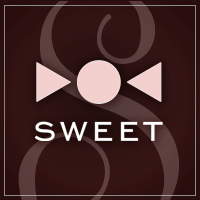Wayfinding signage is an invisible network draped upon our public places. And that network has to work especially hard in airports when we're lost, hungry, and exhausted. Especially when helping us navigate in jetlagged states using strange languages, good wayfinding means sticking to clear, legible typefaces. So how do designers choose?
"It's like a spiderweb—you can't touch one spot without making the whole web move," says Jim Harding, who designed the wayfinding system for Atlanta's Hartsfield International Airport, the busiest airport on the planet. In an interview adapted from David Zweig's bookInvisibles: The Power of Anonymous Work in an Age of Relentless Self-Promotion, Harding takes us through the design catacombs of the Atlanta airport (okay, the terminals) to show us how he developed an international graphic language to prevent passengers from getting lost. In addition to all sorts of fascinating details about the behavior of travelers, the story includes this fascinating nugget: Just three typefaces are used in the wayfinding signage for 75 percent of airports: Helvetica, Frutiger, and Clearview.
$28

Invisibles: The Power of Anonymous Work in an Age of Relentless…
From amazon
15 purchased by readers Gawker Media may get a commission
Buy now
It makes perfect sense that airports would employ sans serif typefaces, which are easier to read at a distance (and bad for small, on-screen type ). But there are also some pretty sweet little details found within these typefaces which make them winners for airport signage. Here are the three you're most likely to find at an airport near you.
Advertisement
Helvetica
The granddaddy of wayfinding signage is the half-century-old Helvetica, which was developed in Switzerland. It has a supposedly "neutral" vibe which feels vaguely familiar and comfortingly classic, yet it doesn't look dated. For readability it is especially embraced due to the distinctive shapes of its letters—including the lowercase "a" which will never be mistaken for an "o," for example.
Frutiger
Frutiger was actually designed for an airport—Charles de Gaulle Airport in Paris—by Adrian Fruitger in 1975. Fruitger had developed the beloved Univers, another good sans serif font, but wanted to create something custom that would reflect the contemporary architecture of the airport. The typeface is known for having prominent ascenders and descenders—the parts of the letterforms that stick up and down like "l" and "p"—and wide apertures, or partially-enclosed openings inside letters like "e" and "n."
Sponsored
Clearview







